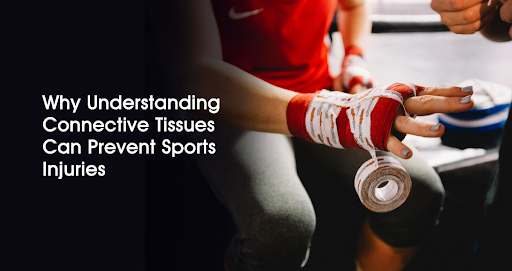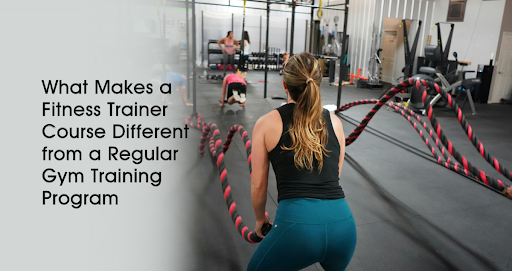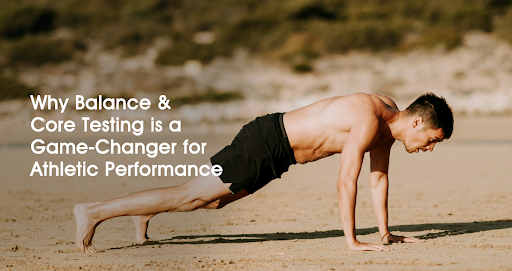
- info@fitindiatrust.org
- +91-7999567519

Why Understanding Connective Tissues Can Prevent Sports Injuries
Whether you guide others as a fitness coach or train for your own goals, injury prevention is the foundation of long-term success. Yet, while we pay close attention to muscles, endurance, and bones, many forget the hidden network that holds it all together - the connective tissues.
These tissues are the support system of the body. They keep everything together, and your muscles can move your bones while your joints are stable. Understanding the link between connective tissues and sports injuries will help you train smarter and perform better.
What Are Connective Tissues?
The connective tissues of the body are its structural glue. These tissues include tendons and ligaments as well as fascia and cartilage. Each of these plays a role in stability and movement. Find out below:
-
Tendons connect muscles to bones and transmit force in different lifting movements and when jumping.
-
Ligaments connect one bone to the next and keep your joints from moving too much.
-
The fascia is an extremely thin and flexible layer that surrounds the muscles and organs, allowing them to move freely.
-
Cartilage cushions joints to reduce friction and absorb impacts.
All of these tissues work together to form a network that supports all types of athletic movement. By understanding the link between connective tissues and sports injuries, you can reduce the likelihood of sports-related injuries.
The Hidden Role of Connective Tissues in Movement
Imagine sprinting down a track - your muscles are working hard, but it’s your tendons that transfer that power to your bones, and your ligaments that keep your knees and ankles stable. Your body cannot move efficiently or smoothly without strong and flexible connective tissue. When these tissues become stiff and weak, they increase the risk of overuse and strain.
Connective tissues adapt more slowly when compared to muscles. They have a restricted blood supply, which means that fewer nutrients and oxygen can reach them. Athletes may develop muscle strength faster than they do tendon and ligament strength, creating an imbalance in the body. When you get to know the slower adaptation process, you can help prevent problems with connective tissues and sports injuries.
Common Injuries That Link to Weak Connective Tissues
Most sports-related injuries involve some level of connective tissue damage. Some of the most common include:
-
Tendinitis and Tendinosis: The inflammation or wear and tear of tendons, which is generally caused due to repetitive movements or lack of proper recovery.
-
Ligament Sprains: Overstretching or tearing of ligaments, especially in the knees or ankles, during sudden twists or falls.
-
Plantar Fasciitis: Inflammation and pain in the fascia on the sole of the foot, typically related to overuse or a lack of adequate support from the footwear that you wear.
-
Meniscus Tears: The damage to the cartilage of the knee is caused by sudden turns or impacts during sports.
The above-mentioned conditions highlight how important it is to take care of your connective tissues. It is even more evident that connective tissue and sports injuries are linked when you consider the fact that most athletes or active people will experience at least one injury during their lifetime. Protecting and strengthening these tissues will help you avoid injuries and perform at your best.
How Your Training Can Impact Connective Tissue Health
Progressive Loading
The increased training intensity with time can help adapt connective tissue to stress. The sudden increases in load can cause microtears and inflammation.
Eccentric Exercises
Exercises that lengthen muscles under tension, like slow squats or heel drops, are proven to strengthen tendons and ligaments. They promote the creation of collagen with increasing the resilience and elasticity of the tissue.
Mobility and Flexibility Work
A healthy range of motion can allow tissues to deal with stress in an effective way. Incorporating stretching, yoga, or dynamic warm-ups keeps fascia and ligaments supple.
Rest and Recovery
Connective tissues need more recovery time than muscles. When you overtrain or do not follow proper rest cycles, it can create an imbalance in connective tissues and sports injuries. You must follow adequate sleep and hydration support to help decrease inflammation.
Nutrition for Tissue Strength
Collagen peptides and zinc help in the repair of connective tissues. When you include those nutrients in your diet will ensure your tendons and ligaments remain strong and flexible.
If you train as a gym coach, you must ensure workouts with strength, mobility, and recovery sessions. As a certified fitness coach, you must guide your clients to the right form and progression to keep their connective tissues healthy and reduce the risk of injury.
What Does Strengthening After Injury Look Like
Recovering from connective tissue injuries takes time and patience. The tissues that are affected by this condition heal more slowly, as they have a limited blood supply. This makes the recovery process longer than muscle healing. The rehabilitation process can help restore mobility and strength. It can prevent the formation of scar tissue that could restrict mobility.
When you follow proper, gentle, and controlled exercises, it can strengthen the injured area and realign collagen fibers. This approach improves long-term durability and lowers the risk of any sports injuries in the future. The proper care can help athletes recover fully and return to activity safely.
Conclusion
In sports and fitness, success comes down to how well you can support your body. Connective tissues are the unsung heroes of stability and power. And when you know the connection that connective tissue and sports injuries share, it will help you train smarter and heal faster with great efficiency. Taking care of your tendons, ligaments, and fascia is about preventing injuries and developing a body that performs well for life.
FAQs
Can understanding connective tissues help prevent sports injuries?
Yes. When you learn how connective tissue's functioning helps you train smarter and avoid overuse, you can have a reduced risk of injuries in the long run.
How do connective tissue injuries occur?
They usually happen due to overuse, sudden impact, or training too hard without ensuring relevant recovery time.
Why do connective tissue injuries take longer to heal?
The tissues receive less oxygen and nutrients due to the limited blood supply. This can slow down your healing process.


